The 1943 Walking Liberty Half Dollar’s value ranges from $20-$30 in circulated condition to over $125,000 for top-grade specimens, depending on mint mark and condition. Philadelphia (no mint mark) produced 53 million coins, Denver (D) made 11.4 million, and San Francisco (S) struck 13.5 million. Uncirculated coins graded MS65+ are most valuable, with MS68 examples selling for $36,000-$37,500. Rare errors significantly increase worth: Double Die Obverse errors reach $235, coins struck on Peruvian planchets sold for $21,000, and missing designer initials fetch $32-$7,500. Value depends on mint mark location (reverse, below eagle), preservation condition, and presence of minting errors or varieties.
During World War II, American coins carried more than just monetary value—they represented the nation’s economic resilience. The 1943 Walking Liberty Half Dollar, struck while the country fought on two fronts, remains one of the most sought-after silver coins among collectors today. With values ranging from $20 for worn examples to over $125,000 for pristine specimens, understanding what makes your 1943 half dollar valuable could mean the difference between spending pocket change and discovering a small fortune.
Understanding the Three Mint Varieties
The United States produced 1943 half dollars at three facilities, each leaving its distinctive mark on history. To identify which mint struck your coin, flip it over and examine the area directly below the eagle on the reverse side. This small letter—or its absence—determines the coin’s origin and significantly impacts its worth.
Philadelphia struck the highest volume at 53,346,000 coins, making these the most frequently encountered examples. These carry no mint mark, which sometimes confuses newer collectors who expect every coin to bear a letter designation. The sheer production numbers mean circulated Philadelphia pieces hover around $20 to $30 in Good through Fine condition, primarily reflecting the current silver melt value of approximately $8 to $10.
The real excitement begins with uncirculated examples. A Philadelphia half dollar graded MS-65 typically sells for $150 to $250 at major auction houses. The price escalates dramatically for higher grades: MS-66 specimens command $500 to $800, while MS-67 coins reach $2,000 to $4,000. The pinnacle came when Heritage Auctions sold an MS-68+ example for an astounding $132,250 in January 2019, setting a record for this variety.
Denver Mint Scarcity Drives Premium Prices
The Denver facility produced just 11,346,000 half dollars in 1943, marked with a small “D” below the eagle. This lower mintage—roughly one-fifth of Philadelphia’s output—creates natural scarcity that collectors willingly pay to obtain.
Circulated Denver coins in Average Circulated condition fetch $20 to $25, while About Uncirculated examples (AU-50 to AU-58) jump to $45 to $75 depending on eye appeal and surface preservation. The grade where Denver coins truly shine is MS-65, where auction prices consistently land between $155 and $225.
| Grade | Typical Value Range |
|---|---|
| G-4 to F-12 | $20–$28 |
| VF-20 to XF-45 | $30–$40 |
| AU-50 to AU-58 | $45–$75 |
| MS-60 to MS-63 | $65–$110 |
| MS-65 | $155–$225 |
| MS-66 | $400–$650 |
| MS-67 | $1,800–$3,200 |
| MS-68 | $28,000–$36,000 |
Stack’s Bowers documented a remarkable MS-68 Denver half dollar that realized $36,000 in August 2021, demonstrating the intense competition among registry set collectors pursuing condition rarities. Only four examples have ever been certified at the MS-68 level by Professional Coin Grading Service, with none grading higher, making this the effective ceiling for the variety.
San Francisco’s Striking Challenges Create Opportunities
San Francisco minted 13,450,000 half dollars in 1943, identifiable by the “S” mint mark. Production challenges at this facility resulted in many coins showing weak strikes, particularly on Liberty’s left hand and the eagle’s central feathers. This quality issue makes sharply struck, high-grade examples exceptionally desirable.
Circulated San Francisco coins sell for $20 to $35 in typical grades, similar to their Philadelphia and Denver counterparts. The differentiation emerges in mint state preservation. An MS-65 San Francisco half dollar with full strike detail sells for $175 to $275, representing a premium over Philadelphia coins of comparable grade.
The most intriguing San Francisco specialty involves “Proof-like” coins—mint state pieces exhibiting deeply reflective, mirror-like fields despite never being officially struck as proofs. These occurred when fresh dies and carefully prepared planchets combined to create unusually brilliant surfaces. A Proof-like 1943-S graded MS-65 PL typically sells for $750 to $1,200, while an MS-66 PL can reach $2,500 to $4,000.
Great Collections sold an MS-67+ San Francisco half dollar for $37,500 in March 2022, underlining how condition trumps mintage when registry collectors compete. The weak strike issue means fewer San Francisco coins qualify for grades above MS-66, creating intense demand for the rare exceptions.
Error Coins That Transform Values
Manufacturing mistakes during wartime production occasionally created error coins worth multiples of standard examples. Three specific errors dramatically increase 1943 half dollar values.
Doubled Die Obverse varieties show doubling on design elements, most commonly visible on “LIBERTY” and the date. The movement occurs when the die shifts slightly between hubbing impressions. While numerous minor doubling varieties exist, most remain unattributed by major grading services and sell for modest premiums of $5 to $15 over standard values. However, a pronounced Doubled Die Obverse designated by Numismatic Guaranty Company as FS-101 (Flynn-Scott attribution 101) sold for $235 in MS-65 condition at a 2020 Heritage auction. Collectors should examine “LIBERTY” and “IN GOD WE TRUST” under magnification to spot this variety.
The 1943-S Struck on Peruvian Half Sol Planchet represents one of numismatics’ most fascinating wartime errors. During World War II, the San Francisco Mint struck coins for various Allied nations, including Peru. A blank planchet intended for a Peruvian Half Sol—slightly different in weight and composition—somehow entered the hopper with Walking Liberty planchets. The resulting coin shows the full Half Dollar design struck on wrong-country metal. Professional Coin Grading Service has certified just two examples. Heritage Auctions sold the MS-63 specimen for $21,150 in April 2018, while the whereabouts of the second example remains unknown to public auction records.
Missing Designer Initials on 1943-S coins create another collectible variety. Adolph Weinman’s initials “AW” normally appear on the obverse near Liberty’s left foot. Excessive die polishing to remove clash marks or other imperfections sometimes removed these tiny letters entirely. The error occurs with enough frequency that examples appear in most major auctions annually, yet strong collector demand maintains solid pricing. A circulated example in XF-40 condition sells for $32 to $50, while MS-65 specimens reach $425 to $650. An exceptional MS-67 example brought $7,500 at Stack’s Bowers in January 2023, showing how condition transforms even relatively common varieties into significant finds.
Grading Standards That Determine Your Coin’s Category
Professional grading follows the 70-point Sheldon Scale, where numbers translate to specific condition descriptors. Understanding these benchmarks helps you estimate value before seeking professional authentication.
Good-4 coins show heavy wear with Liberty’s details mostly worn smooth and the date barely visible. Fine-12 examples retain major design elements but show significant circulation wear across all high points. Very Fine-20 coins display moderate wear with most detail lines visible but softened. Extremely Fine-40 specimens show light wear only on the highest points, with sharp details throughout most of the design.
About Uncirculated-50 marks the transition point where coins show only the slightest trace of wear, often just a tiny rub on Liberty’s left breast or the eagle’s left leg. These coins retain most of their original mint luster in protected areas.
Mint State designations from MS-60 to MS-70 describe uncirculated coins that never entered commerce. MS-60 to MS-62 coins are technically uncirculated but show numerous bag marks and contact marks from coin-counting machinery and storage bags. MS-63 to MS-64 represent average to above-average uncirculated coins with moderate marks but acceptable eye appeal. MS-65 defines “Gem” quality—minimal contact marks, strong luster, and overall attractive appearance. MS-66 and MS-67 coins show progressively fewer imperfections, while MS-68 and above represent condition rarities with nearly flawless surfaces under magnification.
Strike quality equally impacts value for 1943 half dollars. Full Bell Lines (FBL) designation applies when the horizontal lines on the Liberty Bell on the reverse show complete separation with no weakness. This detail-oriented designation can add 25% to 50% premium on high-grade examples, particularly for San Francisco coins where weak strikes were common.
Authentication and Certification Worth the Investment
Raw, uncertified 1943 half dollars in circulated grades rarely justify professional grading costs, which run $25 to $40 per coin for standard service. However, any coin that appears to grade MS-64 or higher should receive professional certification from Professional Coin Grading Service or Numismatic Guaranty Company before selling.
The benefits extend beyond authentication. Third-party grading provides standardized condition assessment that dealers and collectors worldwide recognize, eliminating negotiation over grade and establishing clear market values. The sonically sealed holders protect coins from environmental damage and handling. Most importantly, certification typically increases selling prices by amounts exceeding grading costs—an MS-65 Walking Liberty might sell for $125 raw but $200 certified, netting $35 to $50 additional profit after subtracting the grading fee.
For potential error coins, professional attribution becomes essential. A coin you believe shows doubled dies might exhibit machine doubling—a worthless form of damage during the striking process that resembles but differs from true doubled dies. Professional graders distinguish between these and assign variety designations that transform “interesting coin” into “documented rarity.”
Smart Strategies for Buying and Selling
Understanding market dynamics helps whether you’re building a collection or liquidating inherited coins. Auction results from Heritage, Stack’s Bowers, and Great Collections provide real-world pricing data superior to price guides, which often lag current market conditions by months.
For sellers, timing matters less for common-date Walking Liberty halves than for rare varieties. The silver melt value establishes a firm price floor, meaning circulated 1943 half dollars always retain intrinsic worth. High-grade examples and error coins perform best at major numismatic auctions where serious collectors compete. Consignment fees typically run 10% to 20%, but competitive bidding often produces prices exceeding dealer buy offers by 30% to 50%.
Buyers should prioritize eye appeal over technical grade when selecting coins for type sets or personal collections. An MS-64 with exceptional luster and minimal marks often appears more attractive than a technically graded MS-65 with poor eye appeal, yet sells for 20% to 30% less. Examine multiple examples before purchasing, and don’t hesitate to pass on coins with distracting spots, stains, or harsh cleaning evidence, regardless of grade.
Your Next Steps With That 1943 Half Dollar
Check your coin’s mint mark first—that single letter dramatically affects value potential. Examine surfaces under bright light or gentle magnification for errors like doubling or missing initials. If the coin shows minimal wear and strong luster, consider professional grading to unlock premium values that justify the certification investment. Even circulated examples hold silver value worth more than face amount, so never spend Walking Liberty half dollars at face value regardless of condition.
Whether you’ve inherited a collection, discovered a single piece in an old drawer, or actively collect these magnificent designs, the 1943 Walking Liberty Half Dollar offers opportunities from affordable type coins to museum-quality rarities. The combination of wartime history, stunning artistry, and precious metal content ensures these coins remain desirable decades into the future.
You may be interested:
- 1859 Indian Head Penny Coin Value Complete Errors List And No Mint Mark Worth Guide For Collectors
- 1911 V Nickel Coin Value Guide Complete Errors List And No Mint Mark Worth Today
- 1902 Dime Coin Value Complete Errors List With O S And No Mint Mark Worth Guide
- 1788 Quarter Coin Value Complete Guide Errors List And D S P Mint Mark Worth Revealed
- 1776 To 1976 Bicentennial Half Dollar Coin Value Complete Errors List And What Your D S And No Mint Mark Coins Are Actually Worth
- 1990 Penny Coin Value Errors List How D S And No Mint Mark Pennies Are Worth Thousands Of Dollars

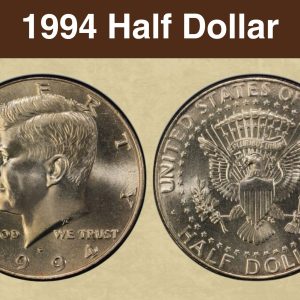
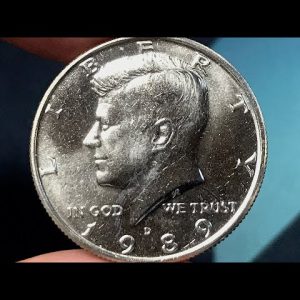
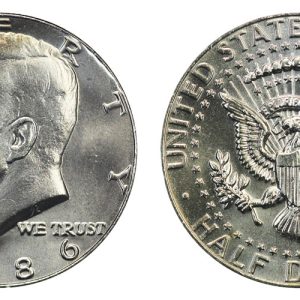
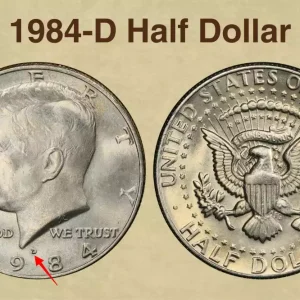
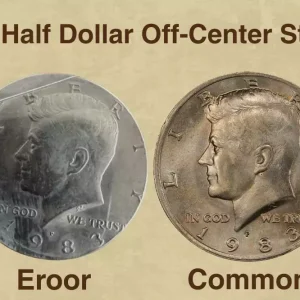
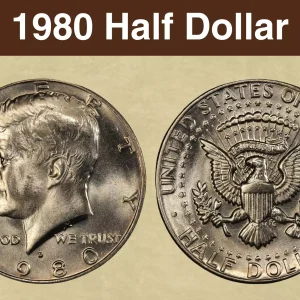
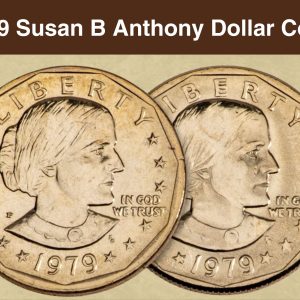
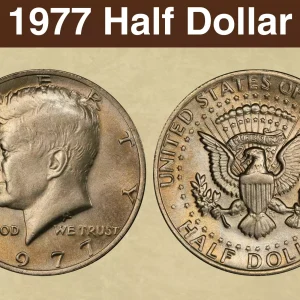
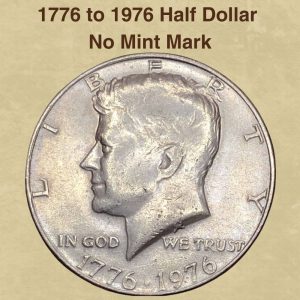
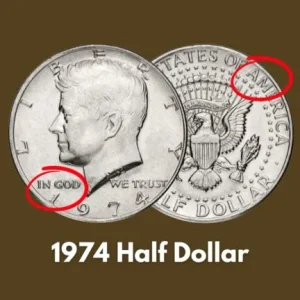
How can I identify a rare 1943 half dollar?
The 1943 half dollar value mainly depends on where it was minted. These coins came from three major mints: the Philadelphia Mint (with no mint mark), the Denver Mint (with a “D” mint mark), and the San Francisco Mint (with an “S” mint mark).
Are there any errors on 1943 half dollars?
This is a multi error coin. Struck through on obverse and reverse sides also a planchet pre- strike on rim. A fine coin for the collector of error coins.
How much is a 1943 half dollar worth today?
A 1943 half dollar is worth at least $20 to $40 for a circulated coin, but its value can range from hundreds to tens of thousands of dollars for coins in excellent condition (MS-65) or rare variations. The exact price depends heavily on the coin’s grade, mint mark (Philadelphia, Denver, or San Francisco), and specific condition.
Where is the mint mark on 1943 half dollar?
No mint mark: The coin was minted in Philadelphia. “D”: The coin was minted in Denver. “S”: The coin was minted in San Francisco.